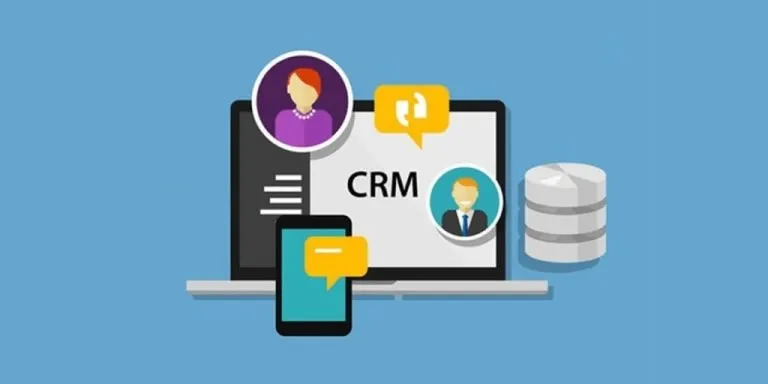Advertising disclosure
Hosting Canada is community-supported. We may earn a commission when you make a purchase through one of our links. Read Disclosure.
How to Choose a Web Host in 2025
Online presence stands on two pillars — domain registration and web hosting. Domain registration is pretty straightforward: you pick a name for your business, check if it’s free, choose the registrar with the lowest pricing, and you are good to go. When deciding how to choose a web host, it’s a bit more complicated.
Because apart from the provider and pricing, there’s much more to pay attention to. You need to choose the hosting type, decide on the server specs, test speed, and uptime, consider the additional services included in plans to support your website, etc.
If you choose the wrong one, your business credibility will be put at risk when the website faces frequent downtime and poor website and email reputation.
Sounds intimidating, huh?
Don’t worry. We’ll guide you on how to choose a web hosting service.
Determine Your Needs
![]()
There’s no one-fits-all perfect provider for everyone. So, before arming yourself with the comparison tables and rushing to research all the hosting providers, you need to understand your business needs. Here’s what you need to know to take into account:
Type of hosted resource
How to choose a web host based on the type of resource?
Answer the following questions:
What do you plan to host? Is it an application or a website? Maybe both? Will it be something e-commerce-related, a personal portfolio, a news portal, or something different?
You’ll need to know this to narrow down the necessary hosting type and check out for the hosting plan limits like a number of websites, amount of disk space, and other specs as well as industry-specific perks included ( like Woocommerce, portfolio templates, newsletter tools, etc).
Technologies used for a website/application
Each software used to build a website comes with specific system requirements. If you plan to use a drag-and-drop builder or a CMS like WordPress, as a rule, they are supported and even included in any hosting by default.
However, certain integrations may come with specific requirements for the server, like specific software installed, supported versions, or modules. The same is valid for custom-coded websites and applications. So having the requirements on hand will help you to narrow down your hosting options.
Number of expected visitors
You need to estimate how much traffic you expect for the website or application. Note that every visitor consumes web hosting plan bandwidth. If you are not sure, you may go with some entry plans and figure it out. If you are aimed at running promos or hosting a high-traffic website, you will need to make sure that the bandwidth limit in the plan you choose can sustain it.
Business email
Do you need a business email address for your website? Sure, you can buy them separately, but as a rule, web hosting plans include email service for free. Depending on a provider and plan, you can create several domain-based email accounts you can use directly on the web or link to your phone or PC email app.
So, if you are a beginner and don’t want to get lost in multiple services and billing, or you are not sure whether you are ready to pay for every additional email address at services like Google Workspace, this factor will be important.
Budget limits
Last but not least, how much money are you willing to spend? There are some entry-level hosting plans at any provider, so no matter what your budget is, you will find something you can start with.
Note, though, that if your budget is low and there are specific software or high resource expectations, or a specific technology requiring root server access, it may conflict with the business needs above. In this case, you will either need to lower the needs or increase the budget.
How to Choose a Web Hosting Type
When you know your needs, the next step will be to decide on the hosting type. Yes, there are several types differing in price, resource limits, access, and management.
How to choose a web host type? Get to know your options:
Shared Hosting
It’s the most popular and the cheapest hosting type. In a shared hosting setup, a physical server is divided into multiple accounts isolated from one another, and when you buy a shared hosting plan, you get a small server chunk limited in its resources. The good news is that it’s perfect for beginners and small websites as pretty everything is straightforward.
You get a control panel, script library, and all the tools like web templates or drag-and-drop builder included. Just upload your files or play with a template online, and you are good to go. The bad news is that you still share the server with many other people, and if someone abuses the server or sends spam, your website might be affected.
VPS
Next on the list is VPS. You still share the server with neighbors, but not so much as on shared hosting and with better isolation, usually on the operating system level. It gives you more control because usually, it goes with the root access to the server and the possibility to control all the global software firewalls, web servers, malware protection, etc.
You could also install your own software modules and versions, which is impossible on shared hosting. It will be great for developers, web agencies, and medium businesses.
Dedicated
With dedicated hosting, you have full control over a physical server, and all its resources are at your disposal. The only limits here are hardware ones. But at many providers, they can be upgraded as well. It’s on the pricey side and demands some technical skills unless you have your admin personnel or opt for managed services. It will be a great option for large projects and businesses.
Cloud
Cloud hosting is a new generation that is considered the perfect balance of flexibility, reliability and pricing. In traditional hosting, data and resources are provided from one physical machine while in the cloud, it’s a cluster of many servers, often in different locations storing your data and serving requests. So even when something happens with one server, all the data will be pulled from another one, and there will be practically no downtime.
One more difference is the payment model. Unlike advance payments for shared hosting, with cloud, you usually pay at the end of the billing period for the resources that were used. It’s great for individuals and businesses running apps and websites with unpredictable resource consumption.
Reseller
Some web hosting providers also offer Reseller hosting as a separate type. It will be perfect for those who are interested in a reselling service. You can become a mini-hosting provider on your own. For the infrastructure, you get one of the hosting types above, plus many white-labeled tools like control panels, website builders, and others.
Factors to Consider
When Choosing a Web Host
When you know what you are looking for, it’s time for the final stage when you get a list of the companies you consider, research, and start comparing them.
Based on our experience of hosting, we offer to compare the hosting providers against the following criteria:
Performance/Speed 
While you are solely responsible for the website optimization, compressing scripts and images, and the loading time, some of the key parameters like connection latency and TTFB (time to first byte) metrics depend on the server, so you will need to request these metrics from a hosting provider.
Some of the providers may give you a test account or an IP to check it with the ping, telnet, and traceroute commands to discover the latency, necessary ports open, and connection quality.
Reliability
The reliability of your hosting provider also matters. No one likes unexpected downtimes and server issues that make your website unavailable. Your business reputation suffers as well in such cases. Therefore, make sure to check the host’s uptime policy. It should be not less than 99.9%. Good providers also have status post pages to inform customers about unplanned maintenances and force-majeurs.
Don’t forget to get acquainted with money-back guarantee terms or availability of the trial period just to secure yourself when a host doesn’t live up to your expectations. Companies confident in their services usually provide 30 days after the purchase.
Security
Another important parameter is security. Check whether your host has the protection measures in place, like anti-malware scanners, brute force protection, 2 FA for the login, firewalls, and DDoS mitigation mechanisms.
Also, it’s worth checking the automated backups. When a host provides you with easy ways to manage them and get daily or weekly backups, it’s a green light.
Tech Specs
Some software requires a particular Operating system (like Windows or Linux distributions) and other server software. So, before purchasing, find out whether your host is compatible with the system requirements of the software you plan to run.
Also, check if server caching is enabled. It can boost website performance and reduce loading times.
Shared hosting usually comes with a control panel ( like cPanel, Plesk, or a homegrown hosting panel). As for other hosting types, it’s optional. Check what control panel is offered and how accessible it is. Is it convenient to navigate through interface? Does control panel contain all the necessary options to manage your hosting? intuitive?
Also, pay attention to the limitations that are not obvious at first glance, like file (also known as inode) limit, what is hidden between unlimited disk space or bandwidth policy to know exactly what you can expect from your plan.
The presence of tools that facilitate website building, like CMS script library or WordPress management panel, will also score additional points for a hosting provider.
Customer service
A hosting service needs to have quality support. Because support either takes your hosting experience to a new level or is so bad that you want to leave a hosting provider. Always strive for the first variant. Even if you rarely face questions and can find tutorials on your own, sometimes, you may need to reach out to support to clarify billing issues, confirm some instructions, or just ask for help.
Check how many support channels are there. It’s better when a host has more than one. Typically, it’s a phone line, 24/7 chat, and a ticket system. If you are used to a certain channel, you’ll need to make sure it’s available.
Before purchasing a plan, contact support for a chat or two and test the response time and knowledge of support agents. Ask some questions and see how they do. This test will set your expectations for future interactions.
It’s also great when a provider has a knowledge base or a help center where you can get instructions for the most common questions.
Price
Don’t get lured by low prices and always go beyond the pricing cart. Pass to the checkout for the renewal costs. Usually, you get extreme discounts for the purchase with much higher renewals. Be careful because, in the end, the cheapest hosting may appear not so cheap.
As a rule, the longer the billing cycle, the cheaper the price. For instance, at Hostinger, you can get the lowest purchase deals on the market, starting at $2.49. if you buy a plan for 4 years or $2.99 for annual subscriptions. But if you are not ready to commit and decide to pay monthly prices, you’ll need to compare the companies based only on their monthly rates.
Also, check what’s included in the price. Sometimes, the base price may seem low, but essentials like automatic backups or security may add a substantial amount to your bill. Or vice versa, a more expensive provider will cost you less because it will include all the basics.
Location
![]() If you are oriented toward a local audience, it’s preferable to buy a hosting plan with a data center location close to your visitors. If you plan to host a website serving Canadian customers, you can check providers like Hostpapa, which has data centers in Canada.
If you are oriented toward a local audience, it’s preferable to buy a hosting plan with a data center location close to your visitors. If you plan to host a website serving Canadian customers, you can check providers like Hostpapa, which has data centers in Canada.
Overall, most of the providers have data centers in multiple locations, and you will need to choose a company with a datacenter closest to the location of your visitors.
As an alternative, you may need to check if a provider includes a free CDN, like CloudFlare, to deliver static content from the closest data center, depending on the location of your visitors.
Conclusion
It may seem a daunting task to choose the right host and for sure there’s no one-fits-all perfect provider. Each of them has strong and weak sides when you start comparing them, but it’s up to you to decide what points are critical for you and for your business, and what are just nice-to-haves.
At Hosting Canada, we regularly review all the popular hosting providers and compare them against these criteria to make the hosting choice easier for you, always keeping an eye on the latest hosting updates.
Stay tuned for more!










